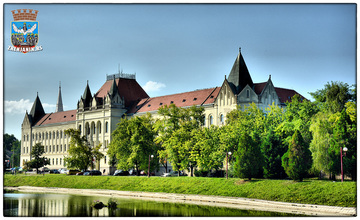Geographical position

The River Begej
Origin of the name
The name BEGEJ appeared as early as by the end of the 12th century in the works of Anonymous (a nameless historian of King Bela III), who, writing about the conquering of the state of the Bulgarian-Slavic ruler Glad by the Hungarians, mentioned this name as well. The historians Teodor Orthmayr and Jene Szentklaray stated that the settlement of Becskerek was hiding under the name of "Begej" (Beguey). However, Felix Milleker, in the history of the town of Veliki-Big Becskerek, stated that the name implied the River Begej, that the word is of Slavic origin and means: to go, to hurry, to flow (beg, begati, bega). In some Indo-European languages, the word "Pege" has the meaning of a brook. This to a certain extent explains why a number of watercourses, brooks, river arms, small rivers, and even channels, had that name, which was also noticed by Milleker. Finally, Johan Adelung, in his etymological dictionary, stated that in some Slavic languages "bek" means brook, and that "bek" is also the root of the Czech "bachno" (marshland). It is not possible to establish (it is just an assumption) that this name was given to the river by some Slavonic-Sarmatians, Goths or, on the other hand, Slavs, who once used to live or stay here.
River course
The River Begej rises in the Carpathian region in Romania and flows through Banat as the left tributary of the River Tisza. It is formed by confluence of three smaller river watercourses - Beregso, Njarad, and Jer. It flows into the River Tisza nearby the settlement Perlez. The river is 254 km long, out of which 76 km in Serbia. From Timisoara to Zrenjanin, and further on to the river mouth, it has been transformed in the navigable, the so-called Begej Canal. The old Begej Canal, the canalized river bed, is 97 km long, and the new one 83 km (up to Timisoara). The main port of the navigable Begej River is in the City of Zrenjanin. The River flows through Zrenjanin along the length of its course of around 13 kilometers.
The city river
The actual settlement of Becskerek developed around one of the Begej River meanders. Later the Town, by excavation of canals, developed on two river islands and three peninsulas. The course of the River through the town was constantly changed – partly by the nature, but to a larger extent by the people who dwelled here. To a large extent, their life depended on the River, its benefits and unpredictable nature, particularly floods, which were a regular phenomenon. The population was supplied with the Begej River waters for centuries, which was delivered in the town by water-carriers - sakadžije. In the middle of the 18th century, by land-reclamation works undertaken by Count Florimund Mersi, the Governor of Banat, huge marshland areas were drained and the land was assigned for agricultural use. Soon after regulation of the River Begej, continuous water transport was established – steamboats cruised along the River, and barges transported materials for the local economy. Way back in the 16th century, there were two wooden bridges on the River, and there are ten of them today. Apart from the river transport, the River Begej provided other benefits to the inhabitants as well – public beaches were erected and facilities for water sports, fish markets, promenades along its banks, restaurants on water…
By regulation of the River in the period of 1970-1985, its course was shortened, and the meander around the settlement "Mala Amerika-Little America" was transformed into three lakes, assigned for recreation, sports, and fishing. Although today considerably polluted by industries, the River Begej is, in the true meaning of the word, the city river and, certainly, the most recognized qualifier of Zrenjanin is exactly – the city on the Begej.
 Skupstinagrada Zrenjanina
Skupstinagrada Zrenjanina